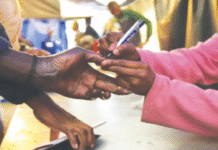When a picture is worse than a thousand words

It used to be said that “the pen is mightier than the sword,” but in these days of ever-increasing reach and power of the social media, the image has usurped the written headline as the number one medium for grabbing the reader’s attention, with various reports showing that 85 percent of social media users respond to an image as opposed to the written word.
It is this power of image that has led me to become so incensed by a picture published recently by a renowned international apparel magazine, the UK-based Ecotextile News, depicting a totally incorrect image of Bangladesh’s RMG industry. To our utter surprise, the images it used were not even of a Bangladeshi manufacturing unit, and were rather shown to grab the reader’s attention.
Whilst I did not necessarily agree with the opinion expressed in the corresponding article, I must acknowledge that the authors have their right to their own points of view and the right to express them. What sickens me, however, is that one such false image can create an impression in the reader’s mind that undermines all of the universally applauded advances made by our apparel sector in recent years in the fields of ethical and sustainable manufacturing.
The problem here is twofold: as long as there exist in our country unscrupulous business owners operating substandard, non-compliant factories and mills, Western journalists will continue to take advantage of that and use the worst possible images available to support their theory and increase their impact and readership (as some argue that a negative story is news, a positive story is just advertorial). I fully appreciate the power that an image can bring to an article, but I also think that what needs to be encouraged and highlighted to the Western media is the positive steps that have been taken, and the improvements that have been made, in terms of attaining socially compliant, environmental business practices throughout the industry.
Having said that, there is no smoke without fire. Despite the conflicting numbers of unregulated factories reported in other recent articles from Quartz and Stern, what is undeniable is that there do exist a small number of manufacturers who are trading improperly, and they are the ones tarnishing the reputation of the industry and Bangladesh as a whole. Unfortunately, in the majority of cases, Western journalists are gaining access to images of these unregulated operations and are using them to support their opinion on the RMG business in general.
The Stern and Quartz reports claim that there is in excess of 7,000 factories operating in the garment sector, a figure which is adrift of information compiled by both the BGMEA and BKMEA and questioned by a subsequent report by Penn State University on behalf of the Centre for Global Workers’ Rights (CGWR). The Penn State report highlights that a considerable number of the factories included in the Stern and Quartz reports were manufacturing garments solely for the domestic market, not for export.
I am not here to dispute the number of manufacturers operating under the radar. What I wish to highlight is that—as my English colleagues would say—“one rotten apple may spoil the barrel” and that Bangladesh’s RMG industry needs to adopt a zero-tolerance policy towards these unregulated manufacturers and mills.
These are the types of manufacturers and businesses that the Western media will, sadly, focus on because, quite simply, it will attract higher reader numbers. What needs to be highlighted to these journalists is that what their images represent is not a true reflection of our RMG industry in 2018. They also need to know that the majority of our mills and manufacturers find these images as abhorrent as the Western readership.
That said, whilst this situation exists, we cannot continue to pat ourselves on the back regarding the improvements that have been made in the sector over the last five years. It is time for the government, BGMEA, BKMEA and other partner bodies to establish a system of social compliance and environmental safety that applies to all manufacturers in the region, regardless of whether their produce is destined for export or for the domestic market.
I appreciate that both the BGMEA and BKMEA represent garment exporters from our country; however, as an association, surely they’re duty-bound to protect the best interests of their members? If the image of the export sector is being tarnished by factories that operate without passing the necessary compliance standards, then these associations should be bringing all their force to bear by lobbying the government and local authorities to ensure that these manufacturers cannot trade. Put simply, if any factory, regardless of whether it is producing for the domestic market or the export, is not compliant and has not undergone the necessary rigorous vetting process to manufacture in an ethical and sustainable manner, then these businesses should be closed.
If we want to continue highlighting the compliance and environmental improvements that are being made within the RMG sector, we need to remove this cancer—once and for all—and the best solution is drastic action which needs to be taken by our government, if necessary in partnership with other international partners, governments and agencies.
Only by cleansing the RMG industry of these substandard manufacturers can we truly say that our garment industry is now the safest and most compliant, ethical and sustainable in the world. At the same time, the Western media agencies need to be encouraged to focus on the positive aspects of the changes that have been made in our country and stop the sensationalist propaganda that they are sometimes fond of publishing.
Mostafiz Uddin is the Managing Director of Denim Expert Limited. He is also the Founder and CEO of Bangladesh Denim Expo and Bangladesh Apparel Exchange (BAE). Email: mostafiz@denimexpert.com
Source: The Daily Star.









